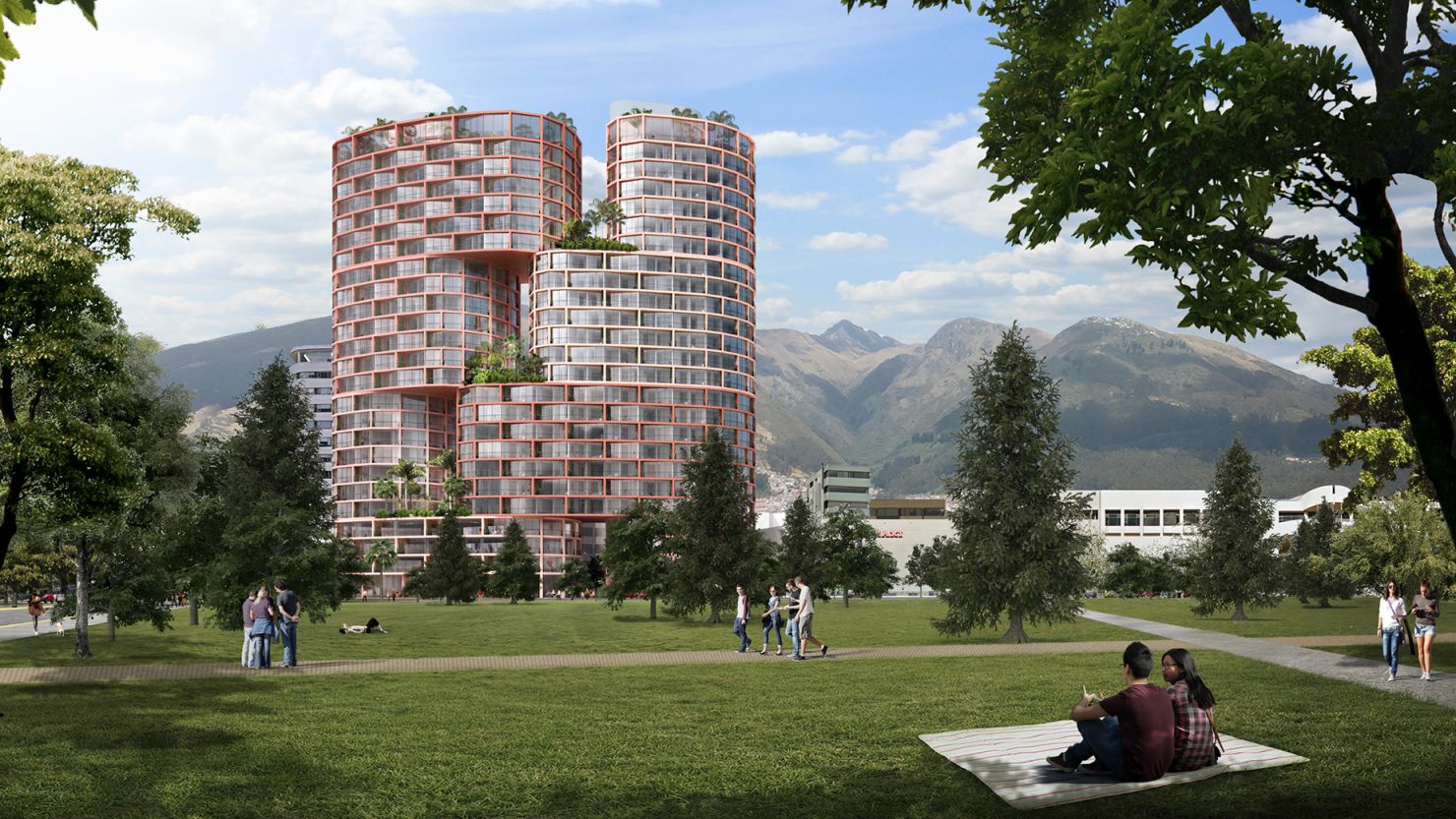The past year in architecture may be remembered for superlatives after India opened the world’s largest office building and Malaysia’s Merdeka 118 became the second tallest skyscraper ever constructed.
But 2023 was also a year that celebrated subtlety, with a thoughtfully designed Chinese boarding school named World Building of the Year and British architect David Chipperfield awarded the Pritzker Prize — the field’s equivalent to a Nobel — for a career dedicated to understated cultural institutions.
The year ahead will likely bring a similar mix of the bold and the beautiful. Here are 10 architectural projects set to shape the world in 2024:
Benin National Assembly, Porto-Novo, Benin
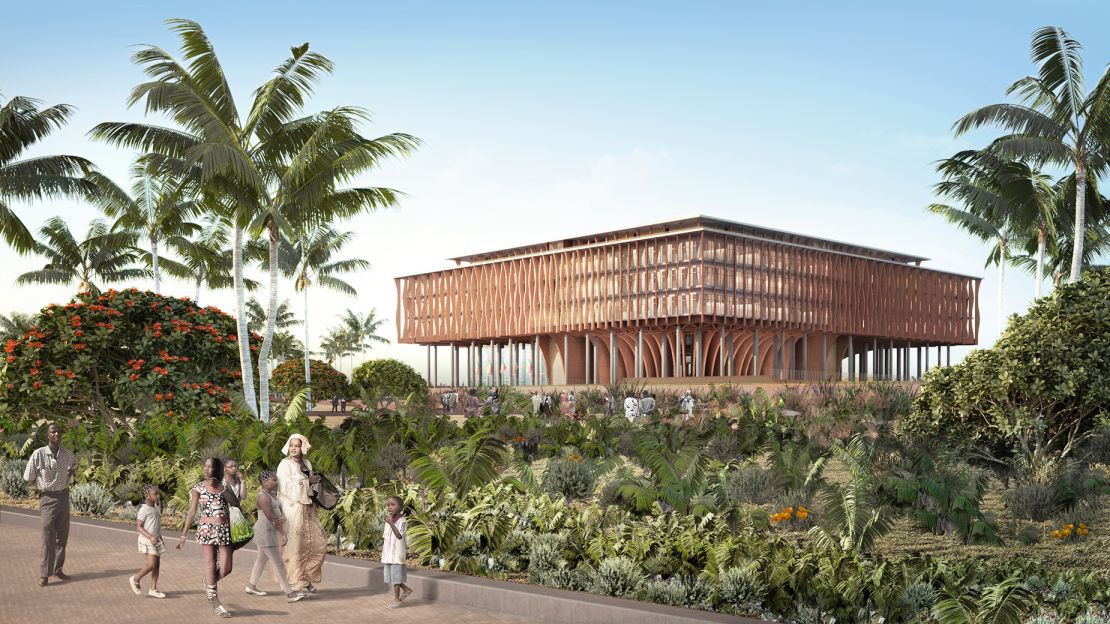
Since his very first commission, designing a primary school for his Burkina Faso village in 2001, architect Francis Kéré has built his reputation on modest civic and community facilities. At 35,000 square meters (377,000 square feet), his plan for a new national assembly in neighboring Benin is a different prospect altogether.
The design was unveiled with relatively little fanfare in 2021, but the following year Kéré became the first African architect to claim the coveted Pritzker Prize. Now, the world will be watching closely to see how principles he has long championed — natural ventilation, ample shading and the use of local materials — are applied at grander scale.
Kéré’s Berlin-based firm says the building’s top-heavy appearance was inspired by the palaver tree, which traditionally served as a meeting place. A ground-floor assembly hall will accommodate Benin’s 109-seat legislature, while a public park around it offers “a sense of openness and transparency,” the firm’s project description added.
Nanjing Vertical Forest, Nanjing, China
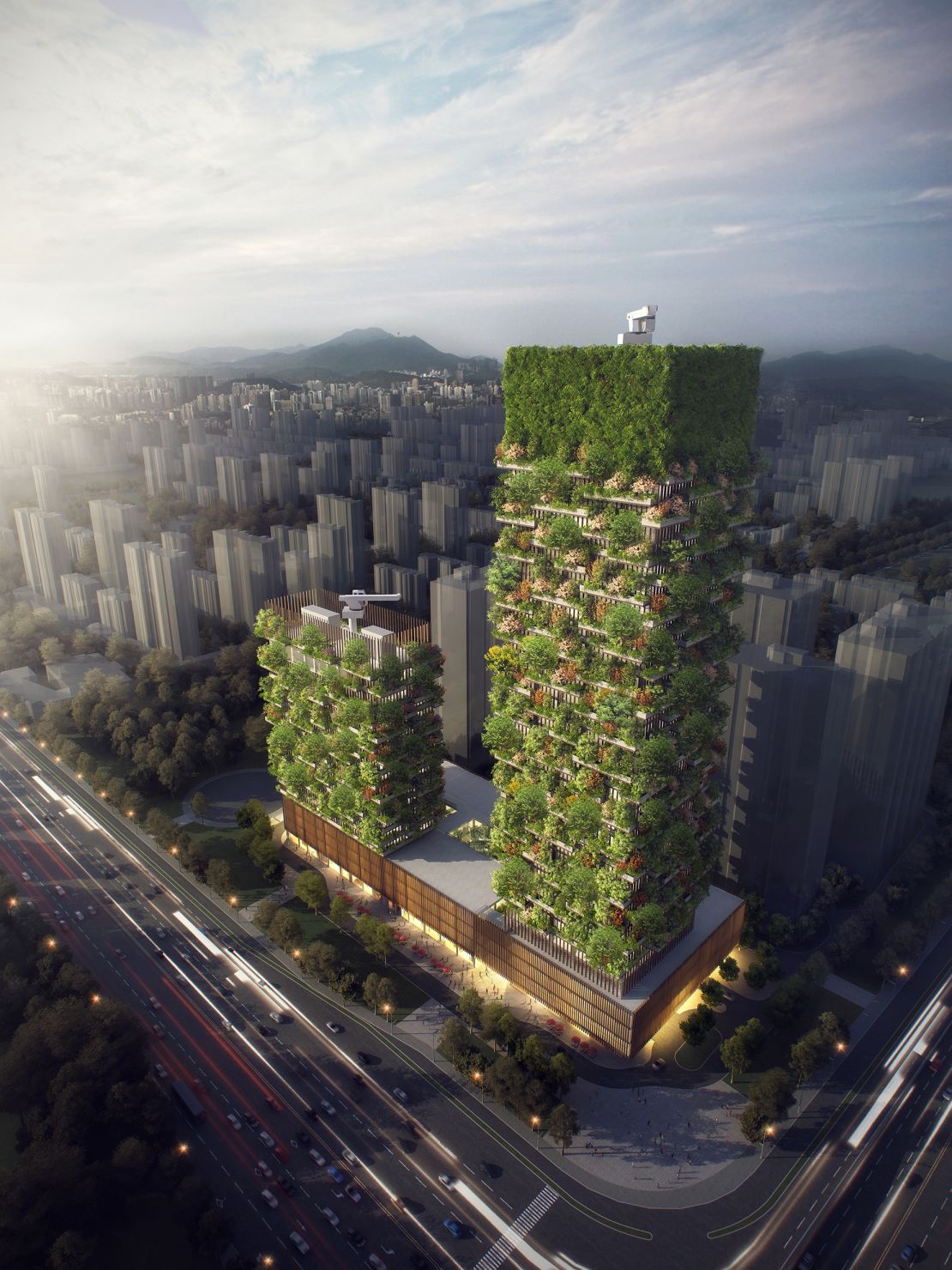
The tree-covered Bosco Verticale (or “Vertical Forest”) in Milan, Italy has become a symbol of green design since it opened almost a decade ago. But for architect Stefano Boeri, the eye-catching residential project was just the beginning.
With a manifesto committed to launching “a global campaign on urban forestry,” Boeri’s firm has since realized similar projects in Europe and beyond. The latest, in China’s former capital Nanjing, will feature around 800 trees and over 2,500 shrubs and trailing plants installed on carefully configured balconies.
Comprised of two towers — the larger of which stands 200 meters (656 feet) tall — the latest Vertical Forest will contain offices, a museum and a hotel with a top-floor swimming pool. Boeri’s firm has said the 27 native species bursting from the buildings’ facades will promote biodiversity and reduce carbon dioxide emissions by around 18 tons a year.
Kunstsilo, Kristiansand, Norway
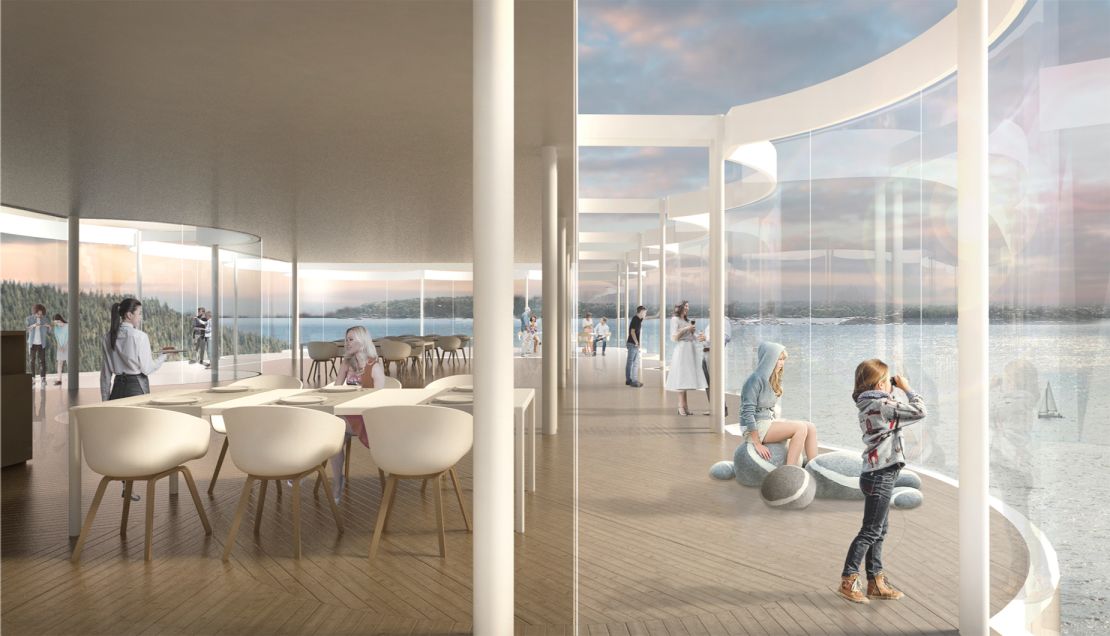
A soaring pre-war grain silo in the southern Norwegian city of Kristiansand stood empty when the local mill closed, following 370 years of continuous operation, in 2008. But local officials ordered that the decommissioned heritage structure be preserved, and a subsequent design competition — which attracted submissions from over 100 architecture firms — tasked entrants with reimagining the space as an art gallery.
The winning proposal, by Mestres Wåge Arquitectes and MX_SI, leaves much of the silo’s exterior intact. Inside, however, internal warehouse space has been reconfigured to accommodate 3,000 square meters (32,000 square feet) of exhibition space, with top-lighting illuminating the space via the structure’s cylindrical concrete “cells.”
Once able to hold up to 15,000 tons of grain, Kunstsilo will now house — among much else — the 5,500-stong Tangen Collection, the world’s largest private collection of Nordic art amassed by art patron Nicolai Tangen, who himself hails from Kristiansand.
Keppel South Central, Singapore
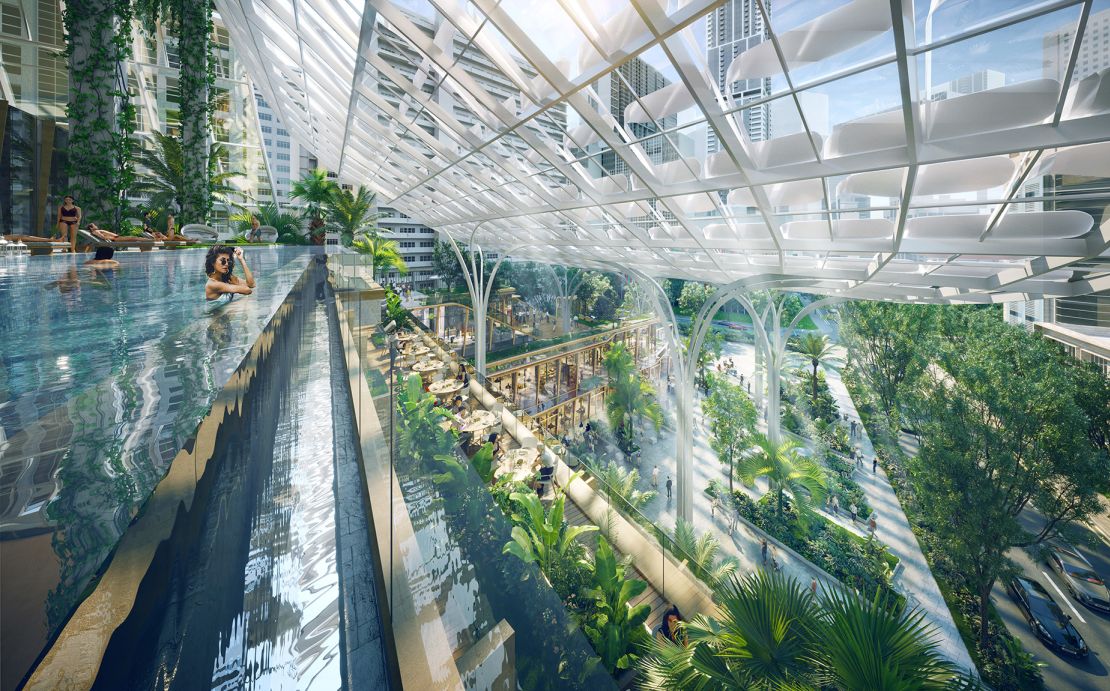
In an era of remote working and return-to-office mandates, architects are rethinking the role corporate workplaces play in people’s lives. Occupants of Singapore’s forthcoming Keppel South Central tower, then, may have more motivation than most to ditch the home office, thanks to its abundant green spaces and airy outdoor swimming pool.
Green planning laws in the tiny southeast Asian state demand that property developers set aside space for landscaping when building new high-rises, and the 33-story tower’s design is punctuated with verdant roof terraces for workers. There’s a public offering, too: The building’s facade curls out near its base to become a canopy for an open-air plaza containing shops, cafes and restaurants.
Elsewhere, rooftop-mounted solar cells and rainwater capture systems contribute to what architecture firm NBBJ boldly claims will make this one of Singapore’s “most sustainable office building developments to date.”
EVE Park, London, Canada
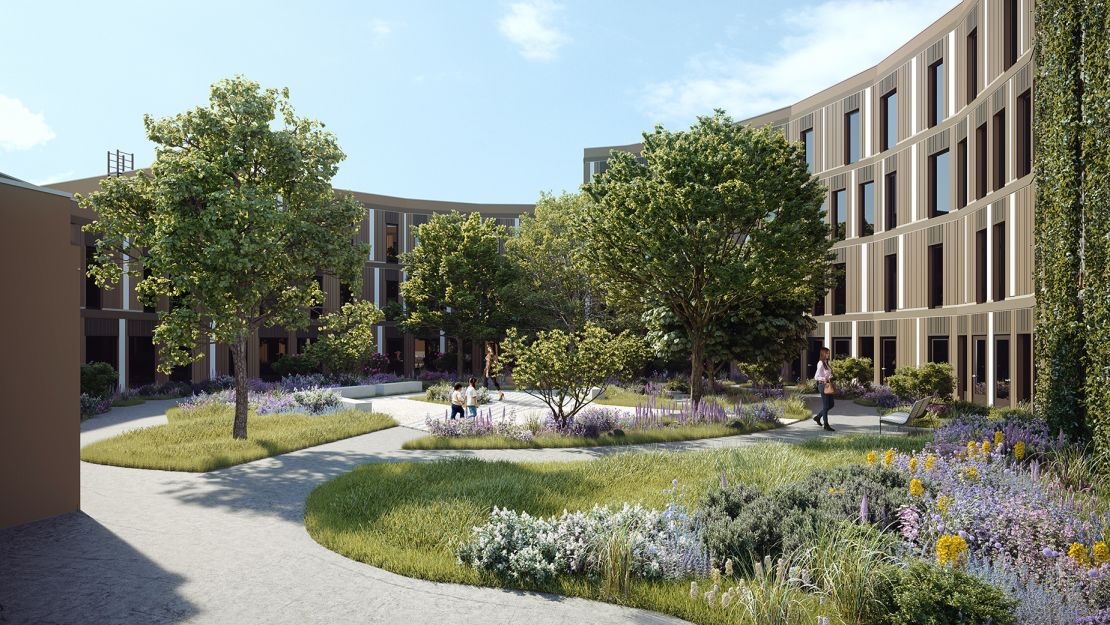
Advertised to potential buyers as an “all-electric community powered by the sun,” Canada’s Electric Vehicle Enclave Park (or EVE Park) in London, Ontario is a net-zero residential project aimed squarely at the EV enthusiast.
True to its name, the development offers electric vehicle charging and a car-share program for residents. Rather than driveways or a ground-level parking lot, each of the condo buildings contains an automated “smart” parking tower that stores vehicles vertically, freeing up space for gardens and landscaping.
Designed for developer s2e Technologies by US architecture firm Gensler, the four circular residential structures can accommodate a combined 84 households. They are positioned and orientated to maximize sun exposure for the mass of solar panels that feed into the community’s “micro-grid.”
EPIQ, Quito, Ecuador
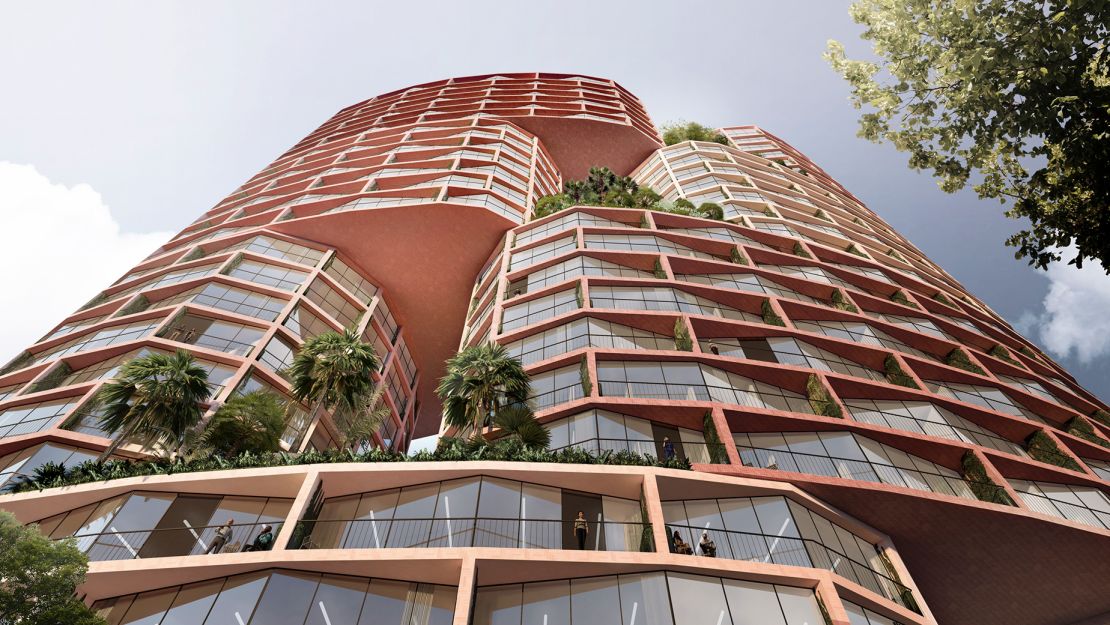
Quito is getting taller by the year. Amid something of a building boom, Ecuador’s capital has welcomed high-rises designed by big-name architects like Moshe Safdie, Jean Nouvel and Ma Yansong in recent years. But it is perhaps Bjarke Ingels, founder of Danish design firm BIG, that has had the greatest impact on the city’s once modest skyline.
In 2022, the architect completed work on the 436-foot-tall IQON, now the city’s tallest structure. This year he returns with another four-letter development, EPIQ, on the southern tip of the downtown Parque La Carolina (often dubbed Quito’s Central Park).
The 24-story mixed-use development is broken into eight distinct volumes — or “buildings within a building,” as BIG put it — that are connected by lush elevated terraces. The red and pink coloration was, the firm added, inspired by the earth tones and herringbone pattern seen int the city’s historic center, which is an UNESCO World Heritage Site.
The Grand Palais restoration, Paris, France
![NEF_Grand-Palais-©Chatillon-Architectes[58].jpg](https://media.cnn.com/api/v1/images/stellar/prod/nef-grand-palais-chatillon-architectes-58.jpg?q=w_1110,c_fill)
The newly restored Notre Dame isn’t the only major renovation wrapping up in Paris this year. Just three kilometers to the cathedral’s west stands the historic Grand Palais, which has been closed to the public since early 2021.
After hosting the Paris Expo at the turn of the 20th century, the Beaux-Arts palace has served as an exhibition hall, event space and even a military hospital during World War I. But while work has been undertaken on its glass roof and foundations in that time, the structure had never undergone major renovations until now.
This 212-million-euro ($232-million) overhaul, masterminded by Chatillon Architects, will modernize facilities, improve access and environmental performance, and change the way visitors move through the complex’s sunlit exhibition hall. An underground level will also be opened, with the building’s former horse-riding ring transformed into a children’s area.
The first restored sections are set to be ready in time for this summer’s Paris Olympics.
One Za’abeel, Dubai, UAE
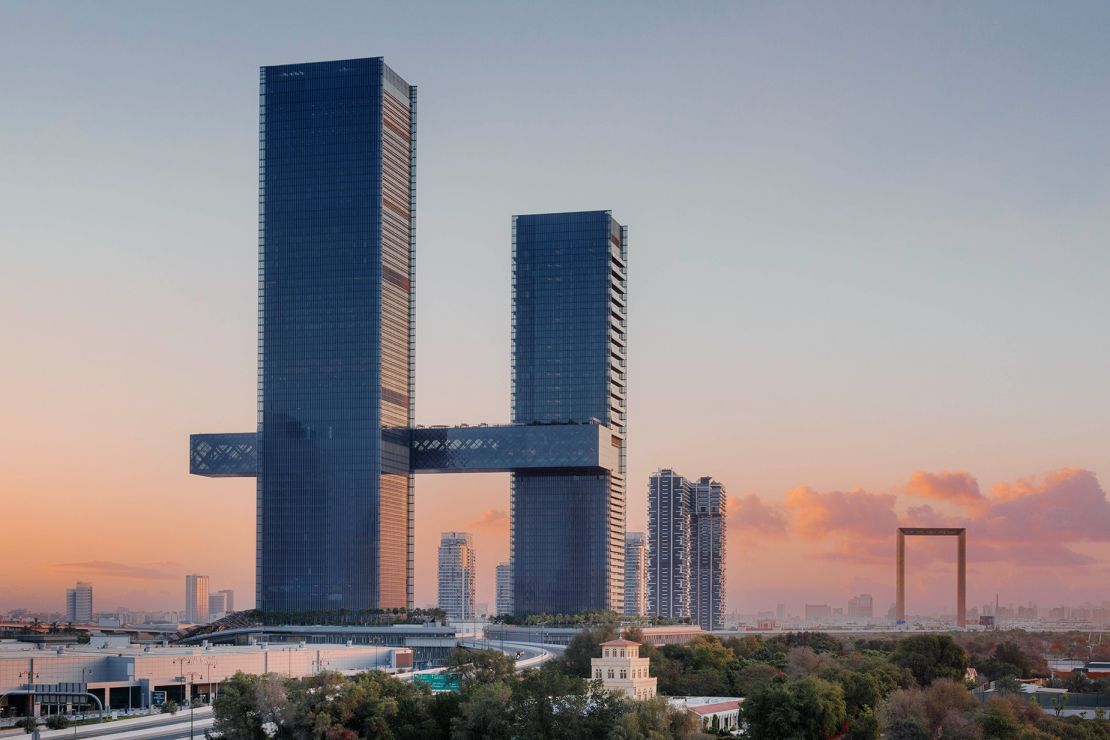
The United Arab Emirates, home to the world’s tallest building, has achieved another superlative feat of structural engineering: The world’s longest cantilever.
Known as the Link, the 226-meter (741-foot), 9,500-tonne skybridge was dramatically hoisted into place above a busy Dubai highway in 2020. It connects the two skyscrapers — described by Nikken Sekkei, the Japanese firm behind the design, as “father and son” towers — of the One Za’abeel development, which is set to open next month.
With the project’s main towers containing residences, office space and a hotel, the 100-meter-high horizontal portion of the complex will house “Michelin-inspired” restaurants, an infinity pool and observation decks offering views over the city and Persian gulf.
Populus Hotel, Denver, USA
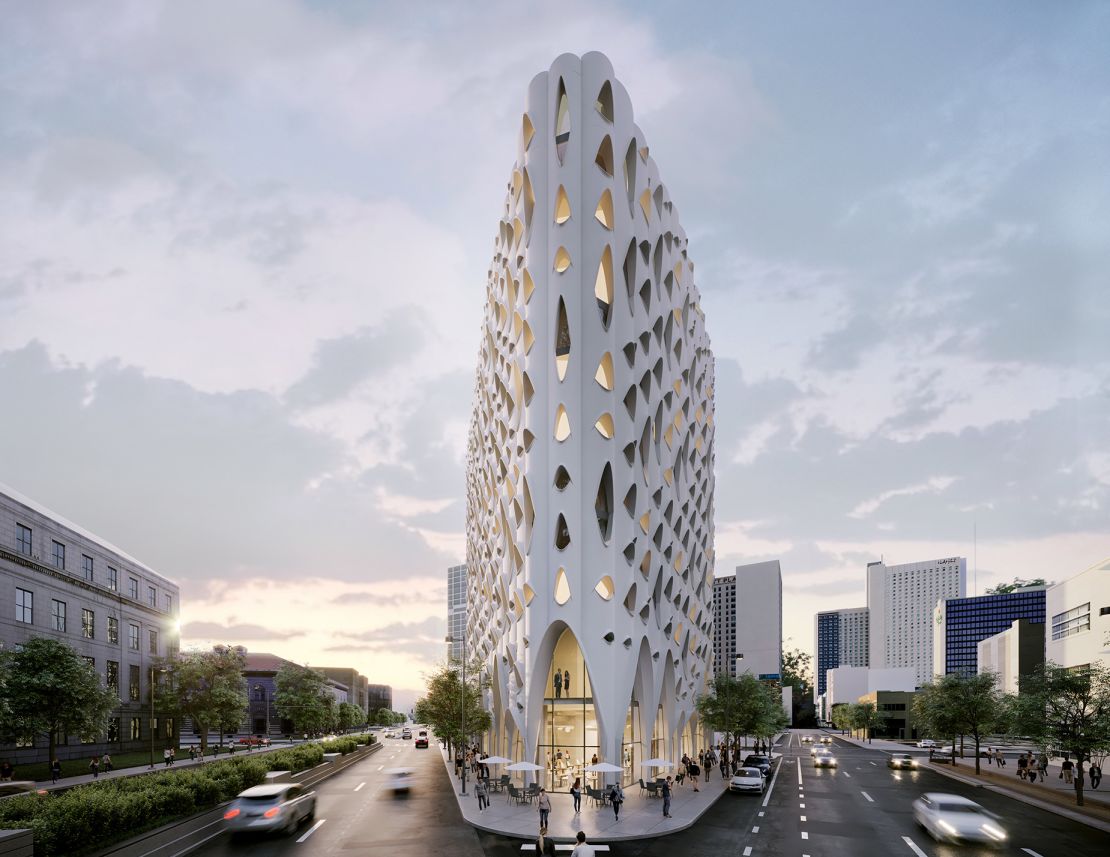
Set to open in Denver, Colorado this summer, the 265-room Populus hotel puts a new spin on nature-inspired — or “biophilic” — design. Inspired by the knotted white bark of the native aspen tree, its white facade is punctuated with openings that provide guests with window seats of various sizes while giving the 13-story structure its refreshingly irregular appearance.
Populus’ owner, Urban Villages, describes its property as the first carbon positive hotel in the US — a title based not only on low-energy design features but also a promise to plant thousands of acres of forest, according the New York Times.
The hotel also boasts a somewhat novel environmental claim: This is the first development in downtown Denver with no onsite parking, according to architecture firm Studio Gang, which has also been tasked a major revitalization of Denver’s Civic Center plaza.
New theater at Queensland Performing Arts Centre, Brisbane, Australia
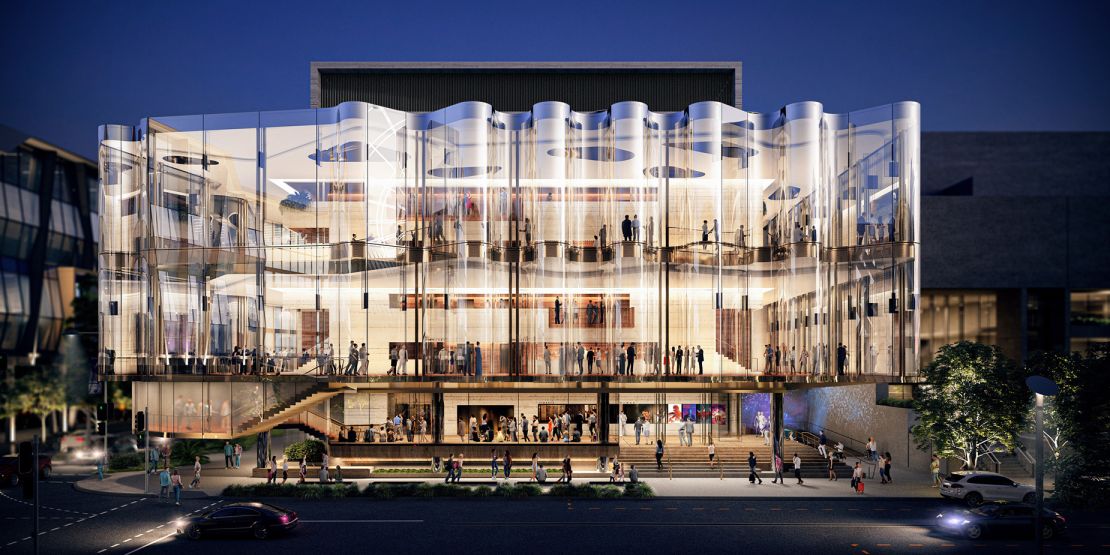
With its huge, rippled glass facade and open foyer spaces, a long-awaited new building at the Queensland Performing Arts Centre (QPAC) in Brisbane, Australia, offers a transparency rarely associated with theaters. Further within, however, a concrete shell contains the altogether darker star attraction: A 1,500-seat timber-clad auditorium designed to host ballet, opera, theater and musicals.
Norwegian architecture firm Snøhetta and local practice Blight Rayner — who together beat more than 20 entries in an international competition — say that the design was inspired by the flow of the Brisbane River. The undulating design also nods to the Turrbal and Yuggera people who traditionally owned the land, with the designers citing a poem by Indigenous Australian poet Aunty Lilla Watson evoking the river’s “ripples.”
Originally set to open in 2022, the long-awaited 175 million Australian dollar ($117 million) project could add a further 300,000 visitors to QPAC’s annual footfall.
